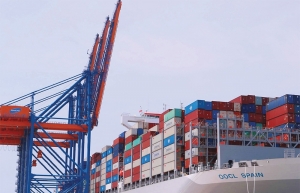Variables expected to address US policy
The Dollar Index has been on a sharp upward trajectory, reaching 109.03 points as of January 9, marking an increase of 0.34 points from the previous trading day. This marks the second consecutive rise for the USD, supported by climbing US Treasury yields.
 |
| Variables expected to address US policy, Source: freepik.com |
Facing international market pressures and the USD/VND exchange rates at banks remaining near the upper limit and surpassing intervention sale prices, Tran Hoang Son, market strategy director at VPBankS, predicts policy rates as likely to increase in 2025, though this may not occur in the first half of the year.
“If the State Bank of Vietnam (SBV) does not raise interest rates, it will need to adopt more flexible measures, allowing the VND to fluctuate within a wider band,” Son said.
Reviewing 2024, interbank rates consistently hit the upper limit during the periods of June and December. Son emphasises that in 2025, if the SBV does not raise rates, it may need to establish a new exchange rate band.
“In terms of operations, with growth-supportive policies, the SBV and the government may refrain from raising rates in the first six months. However, in the interbank market, commercial banks have already ramped up lending and deposit mobilisation. At the same time, government bond yields have risen,” Son said.
He noted that Vietnam saw a relatively modest depreciation of its currency in 2024, at over 4 per cent. This, he considered, a notable achievement for the country.
Standard Chartered Bank Vietnam also forecasts that the USD will strengthen significantly in the second half of 2025 as the tariff policies and fiscal measures under Donald Trump’s second term become clearer and are implemented.
“The actions of the Federal Reserve will also be a key factor influencing the monetary policy decisions of the SBV. We expect it to raise interest rates by an additional 0.5 percentage points in Q2,” said Tim Leelahaphan, economist for Thailand and Vietnam at Standard Chartered.
“In the long term, the sustainability of macroeconomic stimulus measures will affect the strength of the USD. Both domestic and foreign investors may turn to inflation-hedging assets if instability persists.”
Dr. Nguyen Tu Anh, director of the Centre for Economic Information, Analysis, and Forecasting under the Central Economic Commission, predicted that the Fed will need to cut rates in 2025. This is due to the US fiscal policy reaching its limits, requiring a shift to monetary policy to foster growth, leading to rate reductions. Consequently, Vietnam will have room to continue easing its monetary policy.
“The global economy is gradually transitioning from tightening to easing monetary policies, particularly in the US and Europe. However, China remains on a rate-cutting trajectory to counter prolonged economic downturn signals. Vietnam must consider these trends to safeguard its currency and stabilise exchange rates,” Anh said.
He also noted that to stabilise the exchange rate amid mounting pressure on the VND, the SBV has increased short-term interest rates. Vietnam’s foreign reserves are estimated at $83 billion, covering around 2.6 months of imports, a level approaching the sensitive threshold.
“To mitigate external risks, the SBV needs to sufficiently maintain high interest rates to support the domestic currency while making reasonable adjustments to avoid undermining economic growth. I anticipate public investment policies designed to expedite fund disbursement. Faster deployment of public funds can alleviate pressure on the treasury,” Anh added.
In its 2024 outlook and 2025 forecast report, HSBC Vietnam highlighted the USD/VND exchange rate experienced significant volatility in the past year.
“Like many other regional currencies, the VND faces numerous unpredictable variables recently, including uncertainty ahead of the US presidential election, China’s economic stimulus packages, and other geopolitical tensions,” HSBC Vietnam said.
Given the uneven global recovery and Vietnam’s continued pursuit of high growth targets, HSBC expected the SBV to maintain a flexible monetary policy and keep policy rates at 4.5 per cent until the end of 2025.
According to Deputy Governor Dao Minh Tu of the SBV, the central bank will continue closely monitoring market developments and domestic and global economic conditions in 2025.
It aims to manage monetary policy to respond effectively, coordinating with fiscal policies to support economic growth, boost production and business, and stabilise the macroeconomy while controlling inflation.
“The SBV’s priorities include regulating interest rates in line with market developments, macroeconomic conditions, inflation, and monetary policy objectives; closely monitoring the market to flexibly manage exchange rates; and effectively coordinating monetary policy tools to control inflation and stabilise the macroeconomy,” Tu said.
“Additionally, the SBV will direct credit institutions to ensure safe and efficient credit growth, focusing on production, business, and priority sectors while maintaining credit quality.”
| Deposit interest rates are on the rise amid expectations of increasing regulatory interest rate aimed at maintaining economic stability and controlling inflation. In December, over 10 banks raised their deposit rates. These included Techcombank, VPBank, VIB, OCB, TPBank, ABBank, and others. ABBank became the first bank to adjust its rates twice within the month. Unlike previous months, many banks now list rates exceeding 6 per cent per annum for longer-term deposits without requiring a minimum deposit. As 2025 begins, this upward trend in deposit rates continues among commercial banks. This trend continues among commercial banks as January unfolds, with the most recent adjustment coming from Modern Bank of Vietnam (renamed from Ocean Bank after being transferred to MB at the end of December), which has revised its deposit rate table. For deposit terms of 18 months, the bank applies a rate of 6.10 per cent per annum, marking the highest rate offered. Source: Rong Viet Securities Corporation |
 | US policy concerns can still be navigated Vietnam’s economic resilience will be tested in 2025 as it navigates risks of US trade protectionism under the “Trump 2.0” administration, allegations of currency manipulation, and global economic recovery, while leveraging its strong trade surplus and recovering domestic sectors. |
 | Investment activity hinging on fresh US policy direction Faced with fluctuations in exchange rates and global unpredictability, investors are looking for new channels to optimise profitable opportunities. |
What the stars mean:
★ Poor ★ ★ Promising ★★★ Good ★★★★ Very good ★★★★★ Exceptional
Related Contents
Latest News
More News
- Vietnam accelerates push for open banking (December 10, 2025 | 11:58)
- Reshaping the country’s digital finance sector (December 09, 2025 | 21:12)
- VIB's Dual Earnings solution reshapes personal money management (December 09, 2025 | 10:06)
- Foreign funds accumulate consumer stocks in Vietnam (December 08, 2025 | 11:36)
- Listed companies honoured for information transparency (December 06, 2025 | 11:59)
- Citi appoints Minh Ngo as country officer and banking head for Vietnam (December 05, 2025 | 13:40)
- National Assembly reviews amendments to personal income tax law (December 03, 2025 | 19:01)
- Flexible tax regime proposed to better reflect actual incomes of household businesses (December 03, 2025 | 14:04)
- Banks raise deposit rates as funding pressure builds (December 02, 2025 | 17:00)
- Banks boost provisions as bad debt eases towards year-end (December 02, 2025 | 16:52)

 Tag:
Tag:

















 Mobile Version
Mobile Version